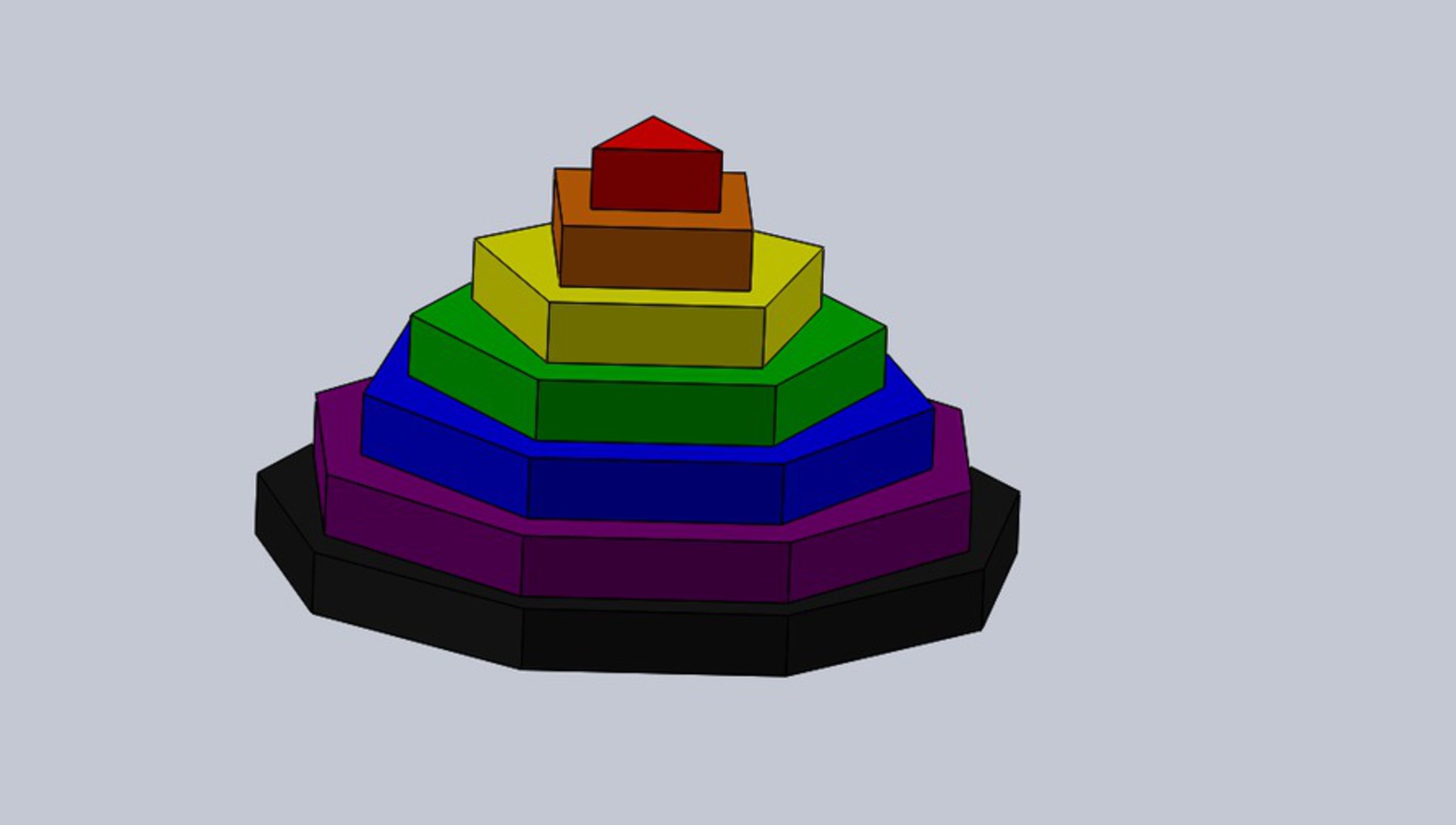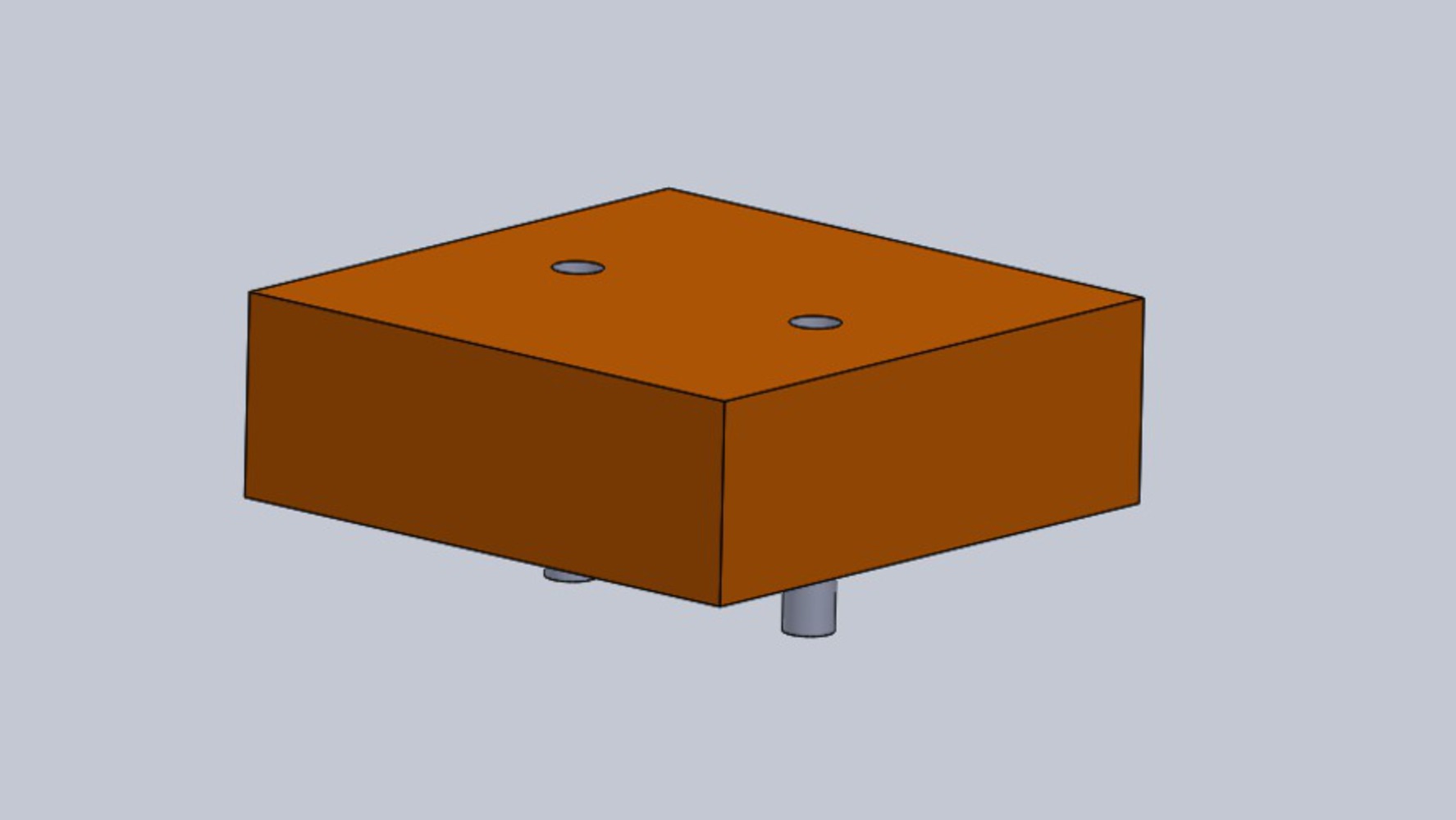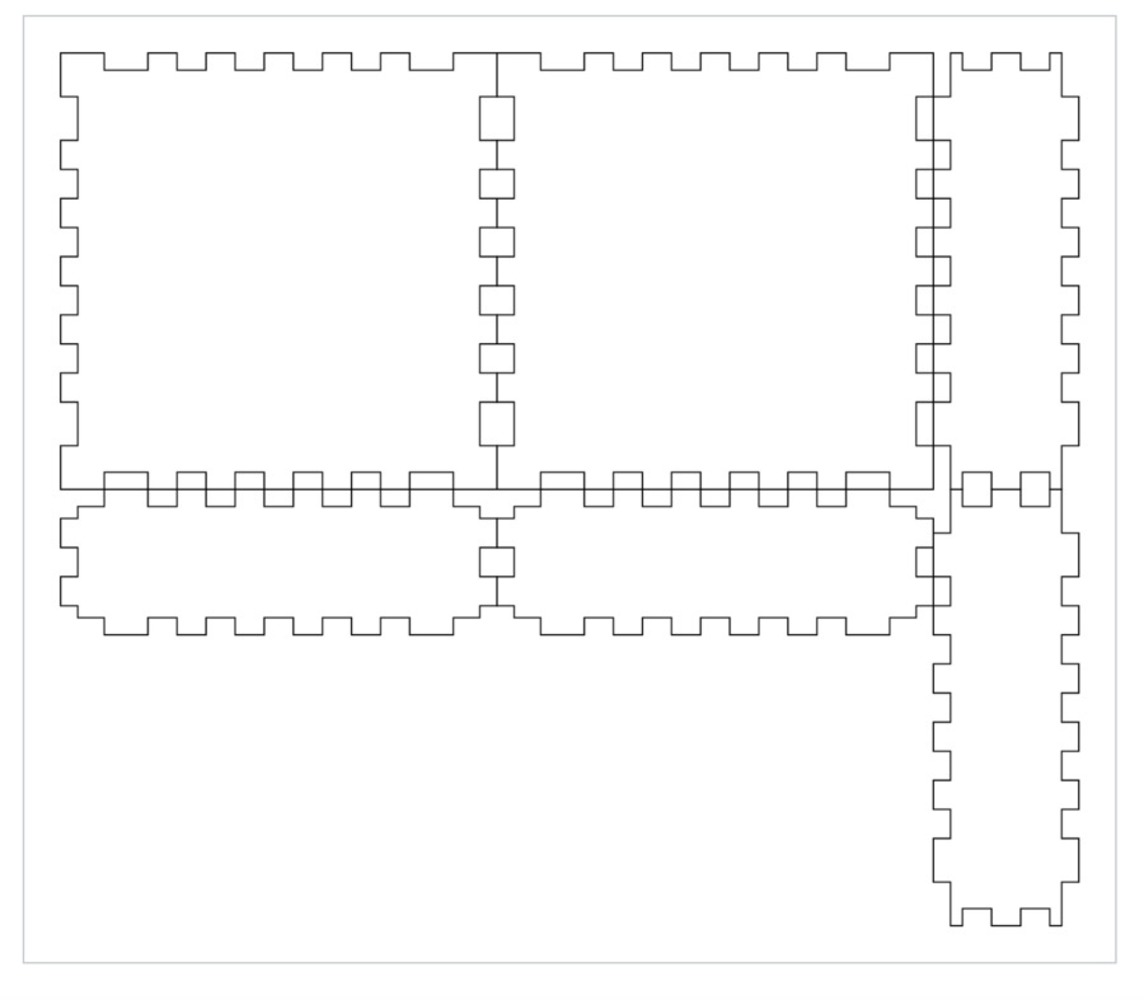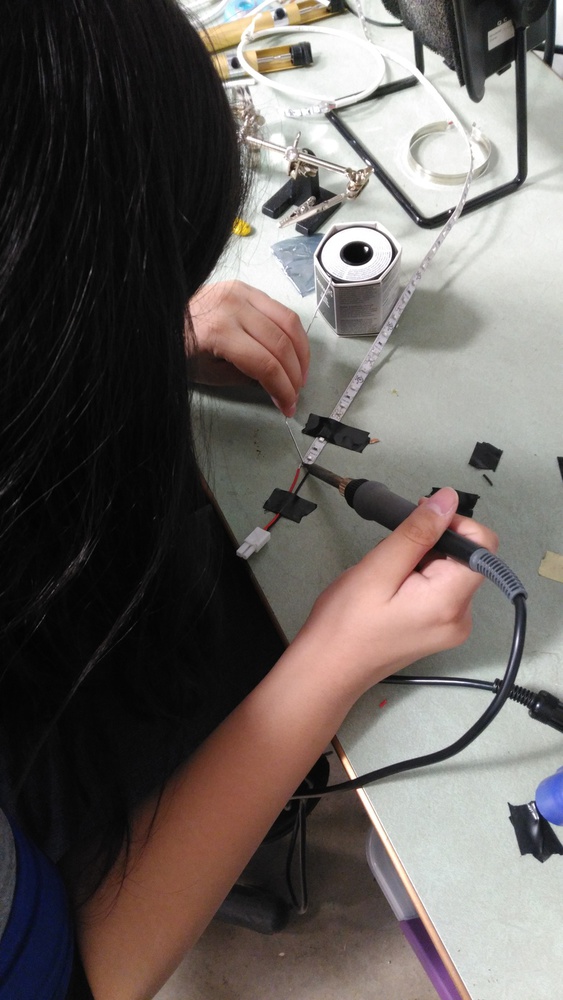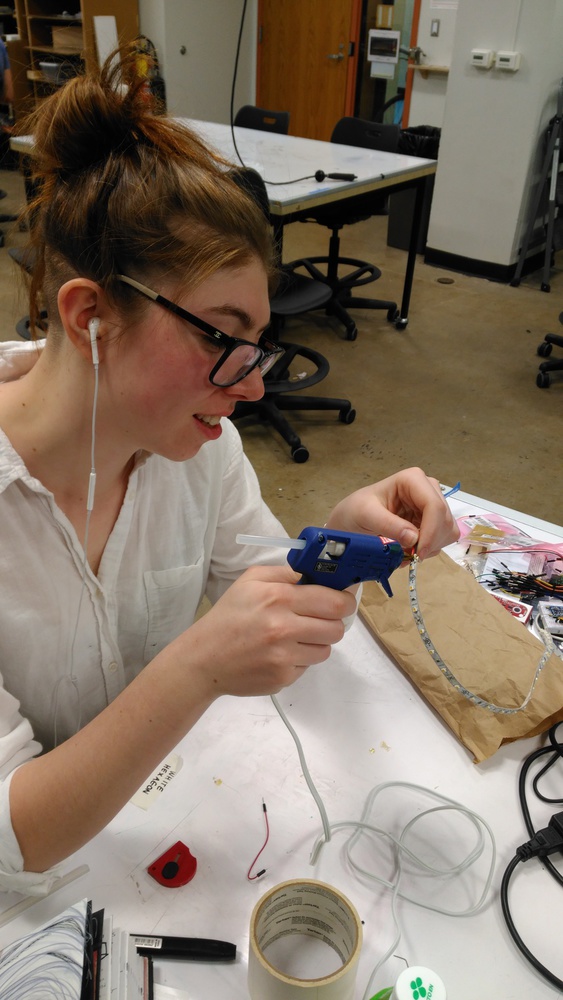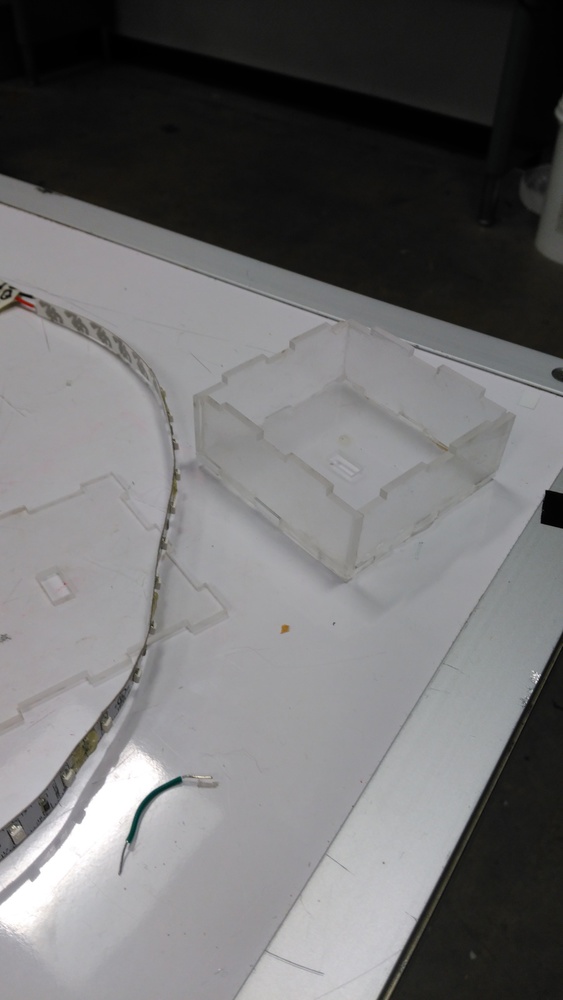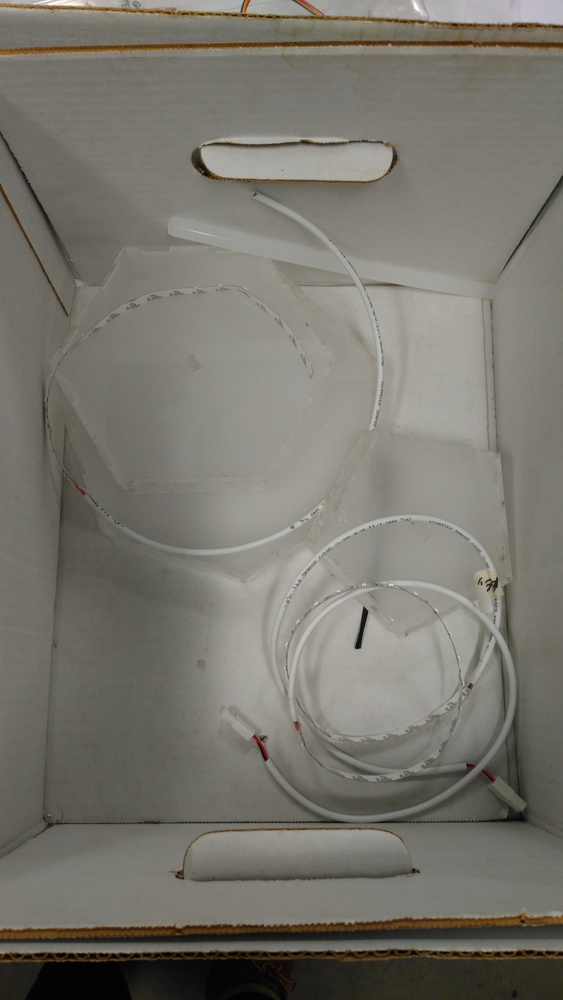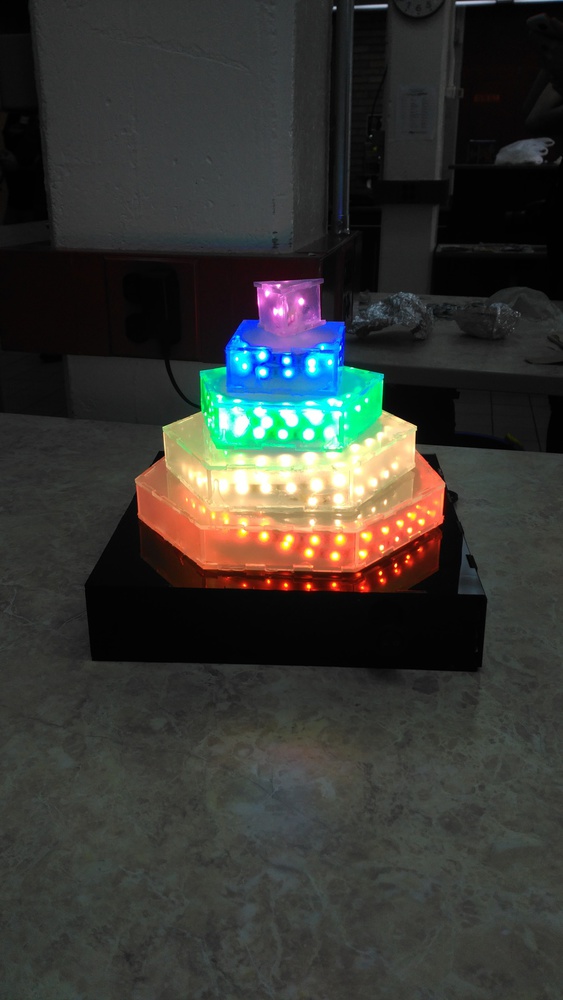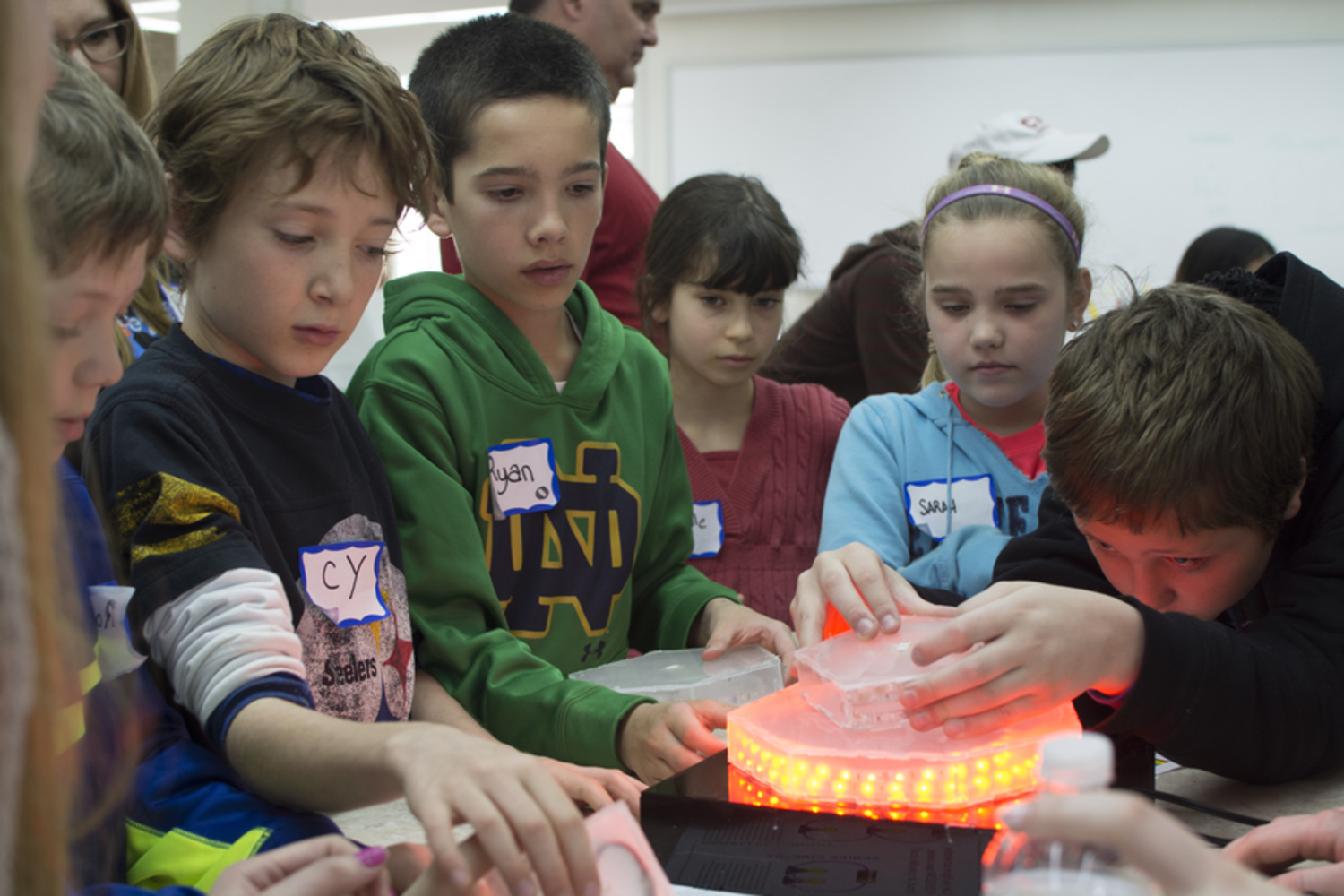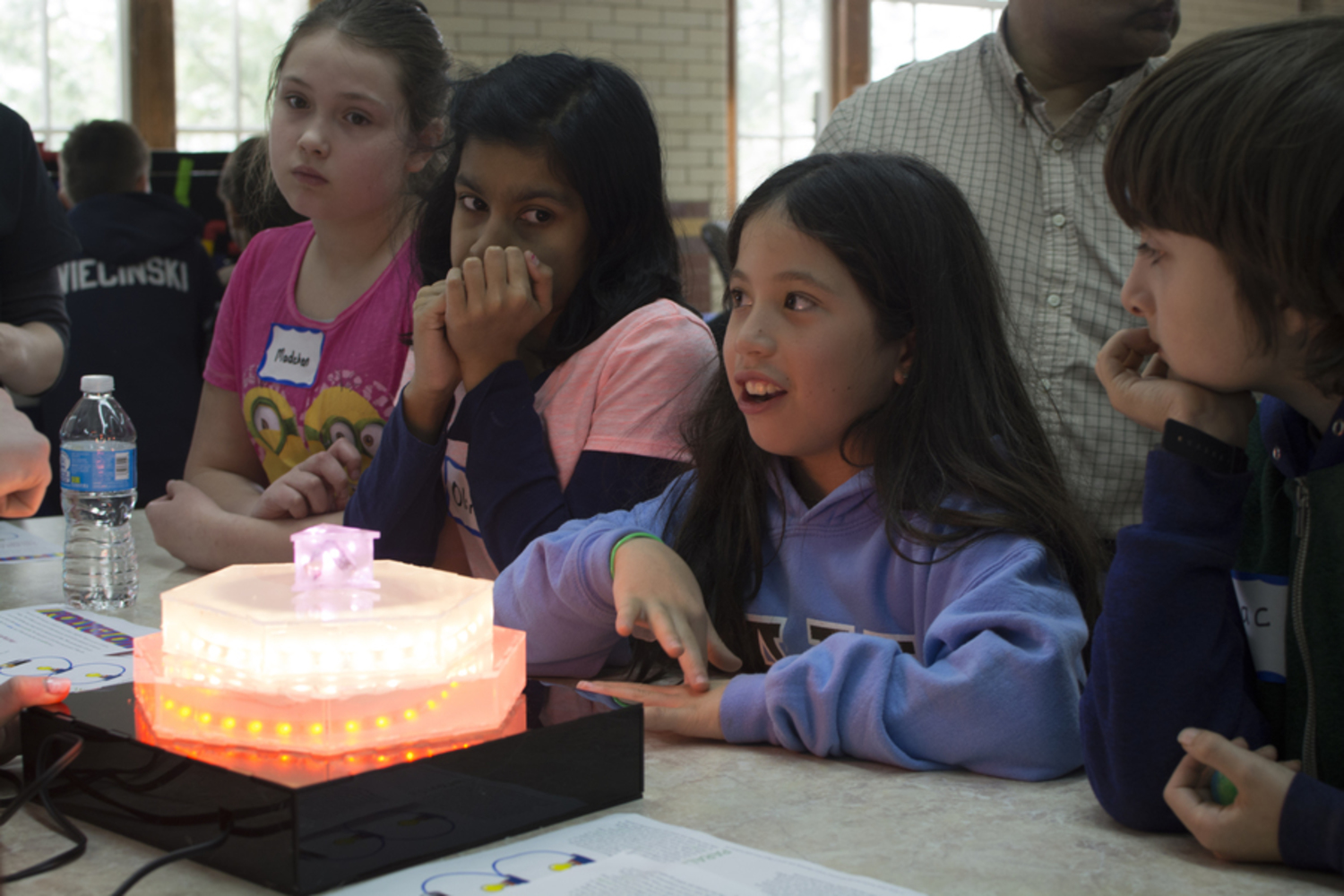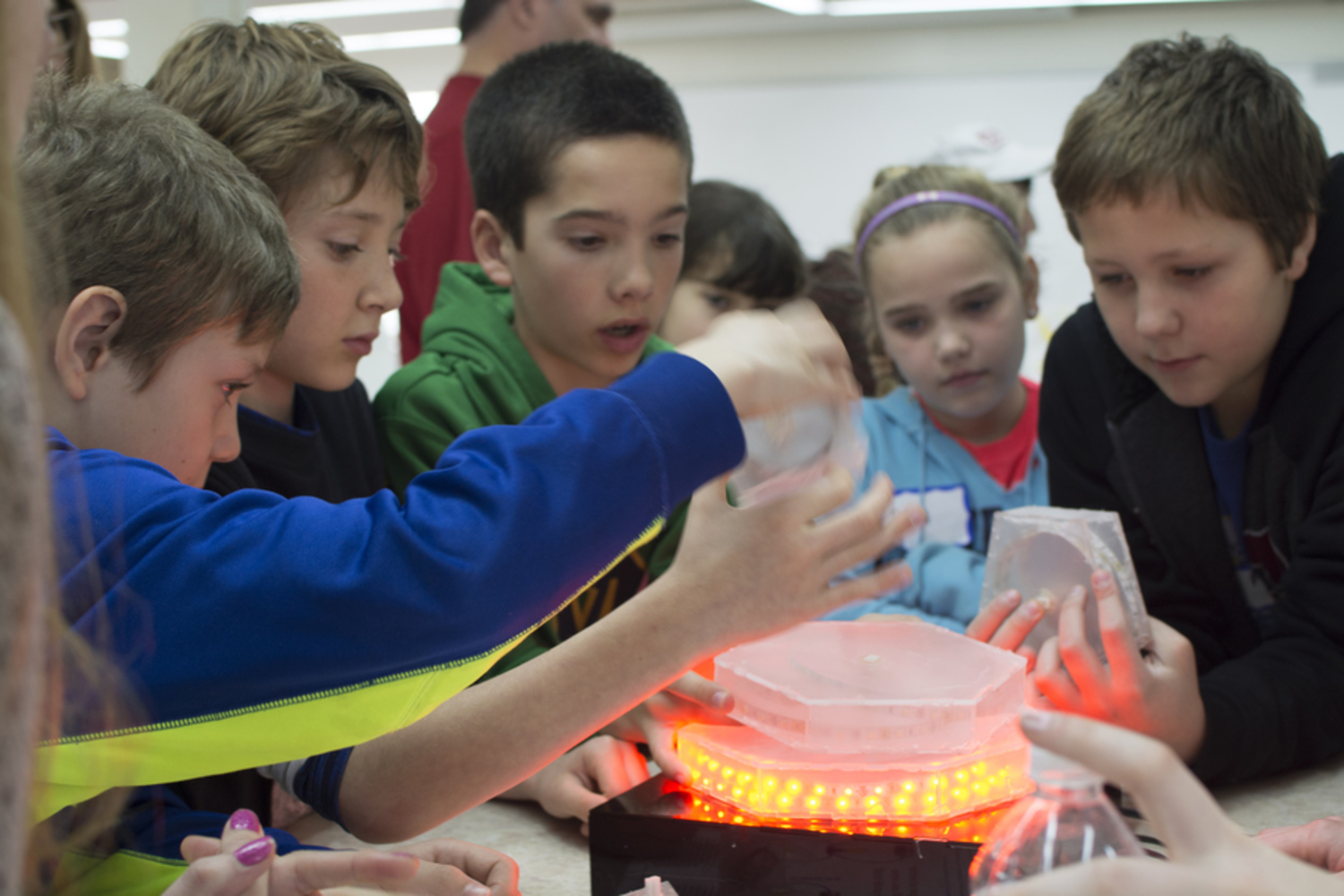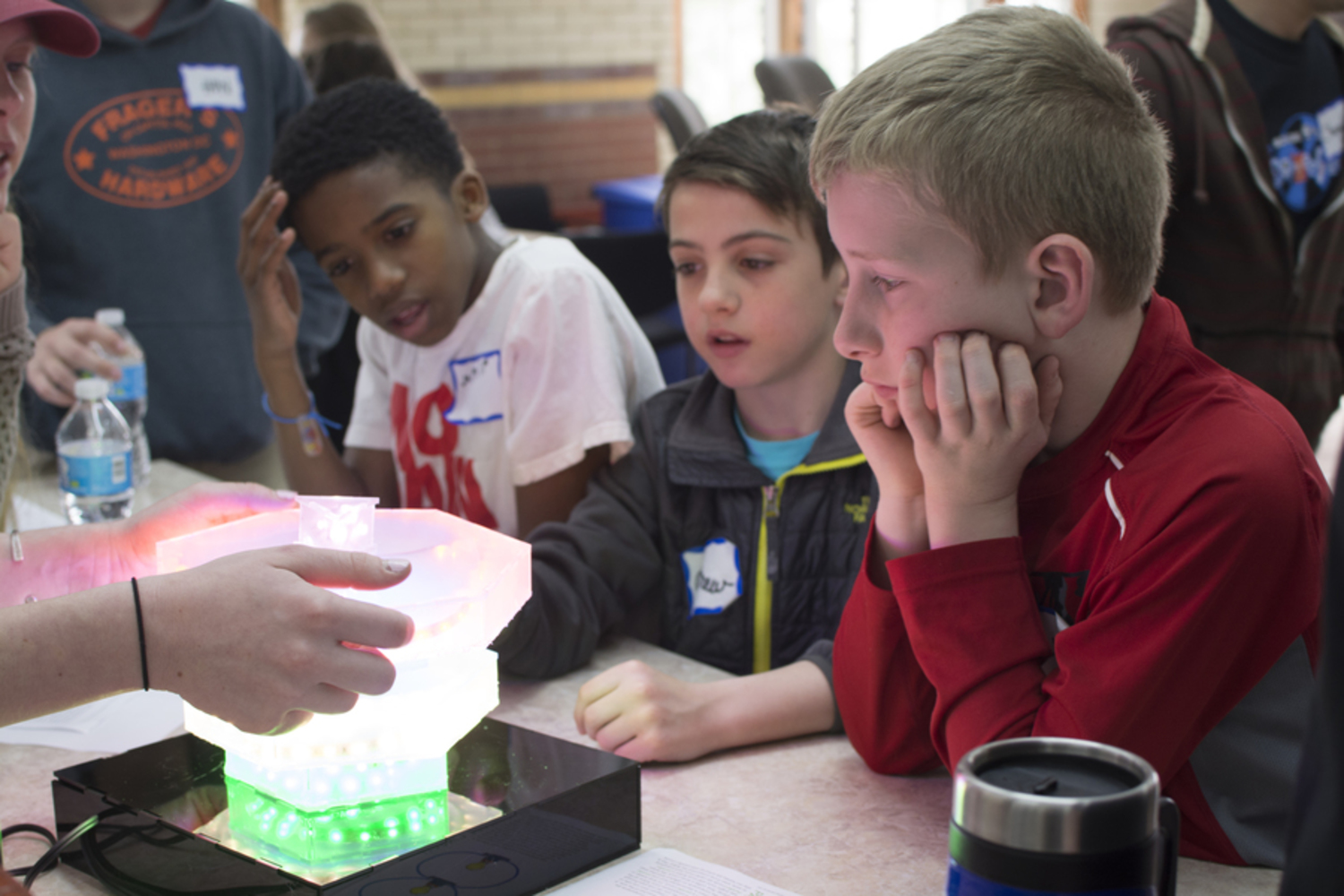Reflection
Our initial design was intentionally simple due to the time frame of our project. We only made minor changes with the electrical connections and our CAD models. This toy meets aesthetic standards, but we are concerned with how much the children will actually learn about electricity. Our other concern is the level of interaction that this toy provides; it may not be entertaining enough to keep the attention of kids. As we move forward, we are trying to create a deeper level of interaction and a more enriching learning experience for the kids who play with our toy.
As the kids played with our toy, we noticed a number of things we would change in the second iteration. We would like to have bigger connections that are easier to put together. This would be easier for the kids to handle and would prevent them forcing the connection in the wrong orientation. We would also use a slower drying epoxy so that we could do a neater job of putting the polygons together.
All in all, the 4th grade kids seemed to enjoy our project, despite the fact that it was designed for a much younger age group. There was a large range of knowledge base about electricity, but they all seemed to be interested in learning about how circuits work and how our project was utilizing different circuit configurations. This was a pretty effective and visually appealing way to teach parallel and series circuits and we hope to improve upon this as we move into our third project, RGB Glow.


